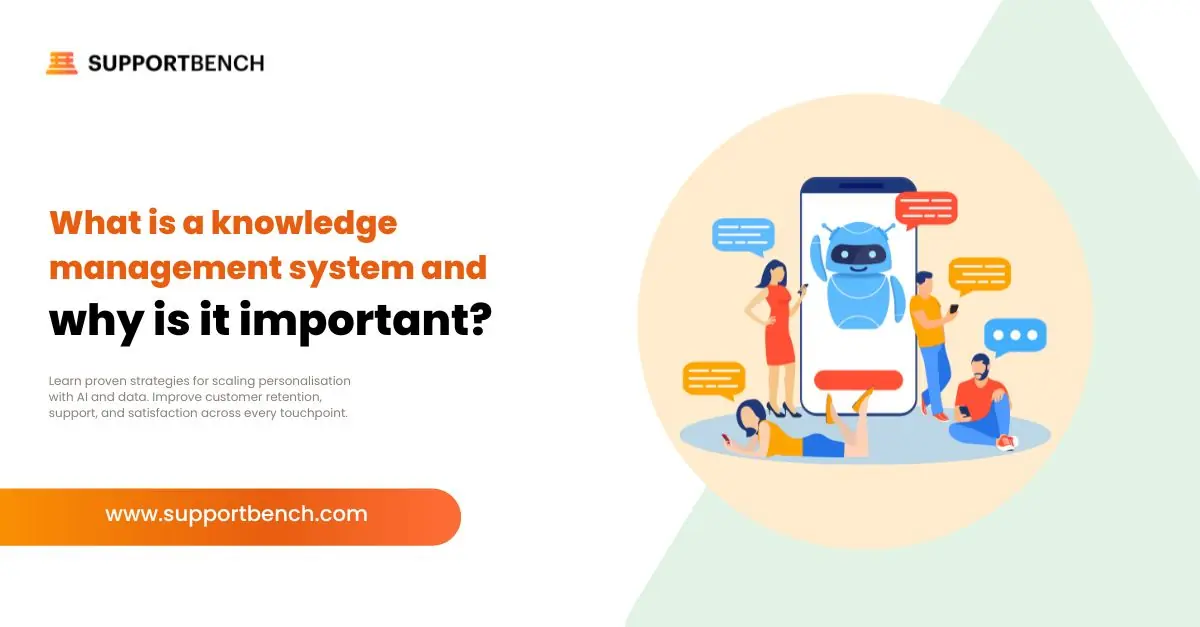What is a customer service SLA (Service-Level Agreement)?
Simply put, a customer service SLA is a promise you make to your customer about how you’ll deliver your service to them. This could be in relation to how much uptime you guarantee or how fast you will deliver a resolution.
What are customer service SLAs?
A customer service SLA defines how your customer will get support from you, how they will receive support from you, and what to expect from your support team.
Why are customer service SLAs so important to you?
As a vendor who is delivering support for a product or service, having a customer service SLA for your customer support is one of the most important things you can do to protect you and your customer from a poor experience.
Everyone can remember a time when they contacted someone for help whether it be for a cell phone bill, a credit card issue, or a software product that just stopped working. Everyone expects something to go wrong from time to time, the problem with customer dissatisfaction comes when you don’t get that call back you were promised, or your question goes into a black hole.
The most valuable thing you can do for your customers and team is to set expectations on the support you deliver. Customers can put up with a lot but when you have no context, or when the promises you make fail can be why you decide to move elsewhere.
“3 in 5 Americans (59%) would try a new brand or company for a better service experience.”
American Express Survey, 2011
“It is 6-7 times more expensive to acquire a new customer than it is to keep a current one.”
White House Office of Consumer Affairs
What should be in a customer service SLA?
For a great experience, there are 2 important things to implement and measure:
- Response customer service SLAs
Response SLAs are by far the most important and difficult to get right. A response SLA sets an expectation for your customer on when they will get a response. If you say you will get back to them in 24h, you need a mechanism in place to make sure this happens.SLAs are not only important for your customer, but incredibly important for your customer service agents. Without an SLA to guide them, they have no way of knowing who to support next or when to get back to an existing inquiry. This takes away cherry picking from agents and you know exactly where every customer request is at.
- Resolution customer service SLAs
Resolution SLAs are incredibly important but they have much less of an impact on the customer. This is because customers are much more willing to accept a resolution as long as the expectations have been met on your response times. This is a grey area and depending on the service or product you offer and might not be relevant. Defining a goal for the customer based on the type of issue it is, is more effective than defining when you promise you will resolve it by.
Resolution SLAs are much more impactful internally. Resolution SLAs should be something to strived for and have some type of measure to see if you are meeting your goals.
All customer issues are important, but typically some are more and some are less so. Some inquiries are based on the severity of the issue and some are based on the size or the priority of the customer. There are no magic numbers and is why SLAs are tricky and require a lot of thought, but once you have got your blue print of what you want to promise, it will become invaluable as a measure of your success.
How can you verify your success?
Success can be measured in several ways:
- Raw metrics on how often you are meeting your SLAs.This should be done daily, weekly, and monthly to make sure your SLAs are not falling behind. This is a great indicator of the success of your support and if you can not meet your customer service SLA, it’s an opportunity to delve deeper into the why. Did you release a new product and your staff need more training? Did this training help? Are you not able to deliver what you said because of head count? Typically, a gradual decline on failing to meet your SLAs is a sign you need more head count. Did more head count solve the issue?
- Customer Satisfaction metrics
Customer satisfaction scores are a huge help to see if your customer service SLA is meeting your customers expectations. You can get direct feedback and gauge to see why your customers are unhappy. Is it because of the response times? Your agents? Their training? Your service? Or are customers feeling like they are falling into that black hole? Direct feedback on every case is the most valuable type of feedback and if you don’t have a program in place, make sure you get one!
- Net Promoter Scores (NPS)
Google says it best. “NPS measures the willingness of customers to recommend a company’s products or services to others. It is used as a proxy for gauging the customer’s overall satisfaction with a company’s product or service and the customer’s loyalty to the brand.”NPS scores are tremendously important as it allows you to gauge your service as a whole and give you the ability to find those problematic customers, reach out, and get them back on your side.
Hint: for a period of time, these are customers which you should always implement a different SLA for.
What should my case / ticket management system do for me to ensure success
Ideally your case management system should:
- Track response/resolution times
a. 24/7 or business hour response time tracking
b. Be able to change customer service SLA based on any case / company / contact criteria
c. Be able to assign customer service SLA based on assets
d. SLAs based on time zones
e. Account for Queue / Team business hours - Produce customer satisfaction metrics
a. Track customer service SLA success on a daily / weekly / monthly basis
b. Be able to trend your data against another metrics
c. Display SLA success by Agent / Team / Globally - Generate customer satisfaction surveys
a. Send out customer surveys after case closures
b. Send custom survey questions
c. Send custom survey questions directly related to the case
d. Allow multiple surveys
e. Measure your customer satisfaction - Gather NPS Scoring
a. Send out customer surveys after case closures
b. Measure your NPS scores
c. Overlay and track NPS scores on other metric data
Implementation of customer service SLA for your customer support is incredibly important and drives success both with your customers and with your customer service organization. Have you had any SLA success or failures? Have you had any other measures of success in regards to customer service SLA? We would love to hear your comments.















